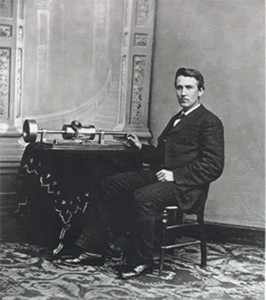The following guidelines, provided through the Library of Congress, are recommended for assisting in the analysis of primary sources. For additional information, refer to the following Library of Congress web site.
http://memory.loc.gov/learn/lessons/primary.html
The following questions may help you judge the quality of primary sources:
- Who created the source and why? Was it created through a spur-of-the-moment act, a routine transaction, or a thoughtful, deliberate process?
- Did the recorder have firsthand knowledge of the event? Or, did the recorder report what others saw and heard?
- Was the recorder a neutral party, or did the creator have opinions or interests that might have influenced what was recorded?
- Did the recorder produce the source for personal use, for one or more individuals, or for a large audience?
- Was the source meant to be public or private?
- Did the recorder wish to inform or persuade others? (Check the words in the source. The words may tell you whether the recorder was trying to be objective or persuasive.) Did the recorder have reasons to be honest or dishonest?
- Was the information recorded during the event, immediately after the event, or after some lapse of time? How large a lapse of time?
In addition to the questions listed above for examining all primary sources, you may want to refer to the questions below for specific types of sources.
Photographs/Pictures
Use the guidelines to examine the picture of Thomas Edison and his aerophone.
Image

These are possible answers for the analysis of the photograph
- This picture was taken by a professional photographer and since Edison is posing, it is clear that it is the result of a "thoughtful, deliberate process."
- The photographer (recorder) was probably hired by Edison to capture the successful completion of his invention.
- Since the photographer was probably hired by Edison, his goal is to portray Edison in a positive image. This may include portraying him as the sole inventor.
- The photograph was produced for Edison who may have personal or professional motives. He may want it to record an important accomplishment in his life or he may want it to promote his new invention and his success as an inventor to attract more investors.
- As stated in question 4, it is unclear of the original intent of Edison.
- At first glance, you may assume that there are no attempts to persuade anyone of any certain point. However, the fact that none of Edison's assistants are shown could be interpreted as a sign that Edison considered the invention to be his accomplishment.
- The photograph was probably taken soon after the successful completion of the aerophone.
Maps
- Use the "Map Analysis Worksheet" from the U.S. National Archives and Records Administration.